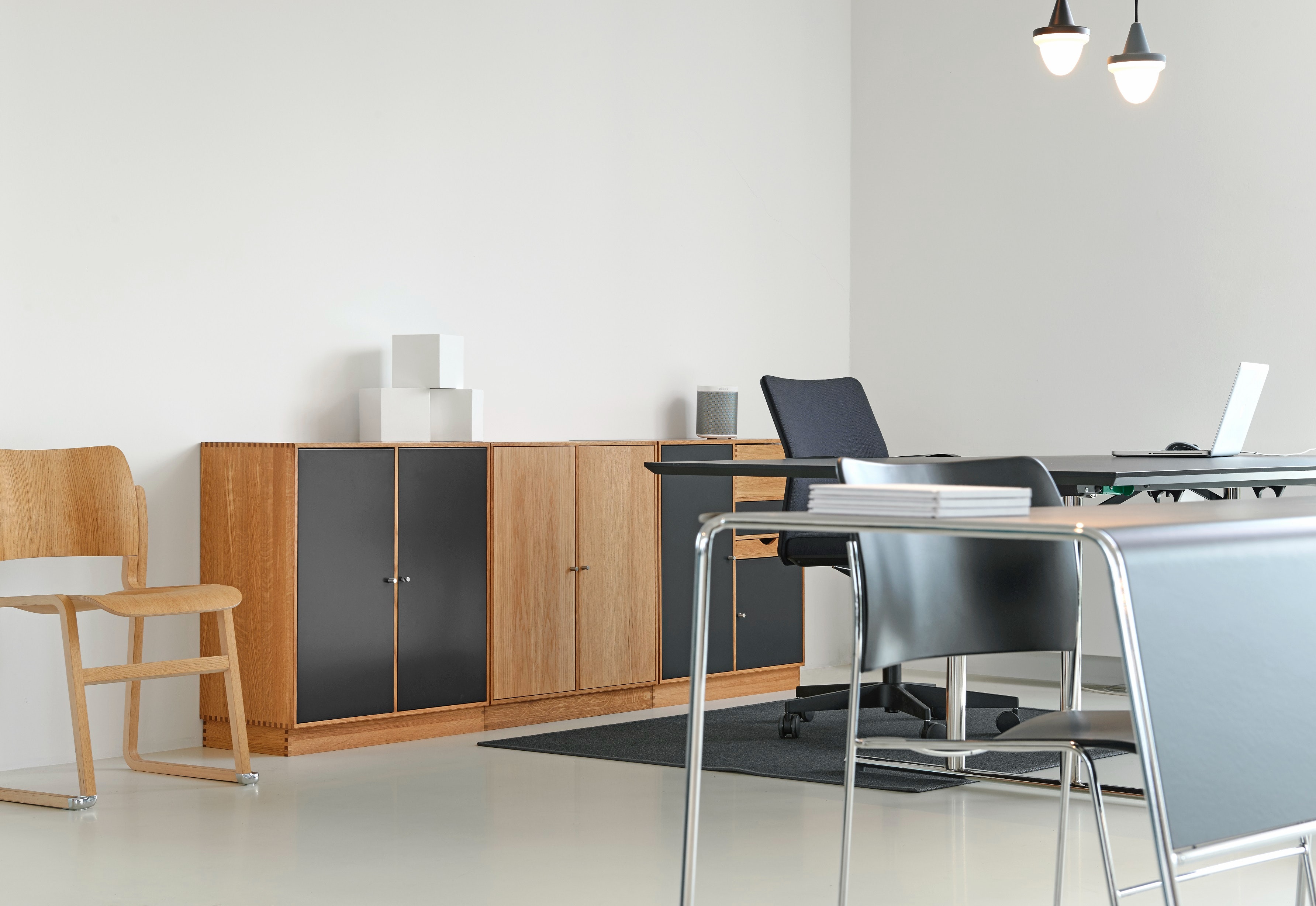Start with the basic essentials and add the rest as you go. You will have the space of your dreams within no time.
Ideally, a flexible workspace is a space that is able to accommodate all the dynamics that an average work schedule brings, particularly when going remote.
There is a lot to do in a day for an average modern remote worker. When working remotely, almost all transactions happen virtually. You want a workspace that can turn to a presentation area, video conferencing space and a project staging area among other diverse needs whenever your schedule demands for it. You should be able to accomplish your tasks without looking for an alternative workspace. In addition, it should offer a quiet working environment, a breakout space, alternative work positions and all the necessary technology to make your work easy, enjoyable and efficient.
It might sound like a challenge to create such a space, especially when you have a limited space. However, with a little creativity, it can be done.
Here are a few guidelines on how to create a flexible workspace of your own.
1. Have a dedicated space
When you are not confined in a 9-5 typical workday in a traditional office, it is easy for personal tasks to get in the way of your work. In addition, if you work from home, you might need to deal with noisy family members, unexpected visitors or a bed calling you back to sleep. Such distractions can easily make your productivity drop significantly.
To avoid all these, have a dedicated space where you can set up your workspace. It can be a spare room, the garage, attic, shed, and a corner in the living room or in your bedroom. Wherever the available space dictates that you set your workspace, ensure it is the quietest and less frequented area of the home.
2. Quality equipment and tools
As said earlier, most of your work happens virtually. You will need quality equipment to make this happen efficiently and without a hurdle. For starters, you need an upgraded computer, tablet or laptop to accommodate all your work. You also need high-speed internet or Wi-Fi to ensure you are able to collaborate with the rest of the team members efficiently. You don’t want to experience buffering in the middle of a video conference. In addition, you need quality headphones, microphone, and cameras among other equipment that you need to accomplish your work.
For communication and collaboration to happen effectively, you need to have communication tools downloaded. For instance, your team might be using Slack or Zoom for communication, you need these tools in your computer. On the other hand, you also need to send and receive files to and from other team members. To make it easier, you need programs such as zip files. This enables you to send large files efficiently, as well as store large files without taking a lot of space. However, you need to have a zip file opener to be able to open zip files.
Ensure that you and your team have agreed on the best tools to use depending on your work dynamics and demands.
3. Ergonomic setup
Of course, furniture is an integral part of your flexible workspace. However, your furniture choice will determine the level of your productivity by a huge percentage. To start with, working long hours is inevitable in the modern work setup. You will want to meet a deadline that is fast approaching while still making sure that the rest of the projects are started off on time. Even as you work for long hours, you want to make sure that your shoulders, eyes, neck and back are not straining. You don’t want to be dealing with backaches and neck muscles pull when you should be working. That is why you need an ergonomic chair and a table with a good height.

A table with the right height will ensure that you are not elevating your shoulders too much or stretching your neck too far down. The right height for you is when your shoulders are in the normal position as to when you are standing. On the other hand, your chair should be ergonomic to support your back. Your legs should be able to rest on the floor or a footrest and your thighs parallel to the floor when you are sitting down. Your shoulders should feel relaxed when your arms rest on the armrest.
Additionally, ensure that the setup is ergonomic as well. Place the keyboard, mouse, telephone and other supplies such as staplers within reach to avoid straining. The monitor should be at your eye level, arm’s length away to avoid straining the eyes.
4. A breakout area
While working for long hours is inevitable in a remote working setup, working this way for a long time can be detrimental to your health and productivity. You want a workspace that allows you to take regular breaks or find alternative working positions to rest your body, rejuvenate your spirits and have a clear focus on tasks ahead.
Things like a standing desk and sofas are good additions to your own flexible workspace. If you are limited on space, consider having adjustable tables that you can easily adjust the height to work in a standing position. If you are privileged to have a beautiful view from your workspace, place a comfortable armchair to create your own breakout area within the workspace.
5. Avoid clutter
Just as they say that a cluttered space leads to a cluttered mind, your effectiveness to work can be limited if your workspace is cluttered. You will waste a lot of time searching for things that you need in piles of papers. In addition, too many things on your desk can easily steal your focus and reduce concentration on important tasks, causing delays on projects. Besides, you don’t want to portray yourself as a disorganized person to your team members during a team video conferencing session.
Create a space free of clutter by investing in storage cabinets. Utilize the vertical space if you have a limited space. In addition, organize your documents in files so you know where to find your paperwork when you need it.
6. Lighting
Another thing that can greatly affect your productivity is working in a poorly lit space. You will be straining your eyes, which can easily lead to headaches and poor productivity.
Make use of natural light and ensure that your workspace lets in as much of it as possible. You can consider enlarging the windows or adding an extra one. If that is not an option for you, invest in quality artificial lights. Besides taking care of your eyes, you want your presentations to appear clear during video calls.
7. Décor
Besides being able to accomplish your tasks, you want a workspace that is cozy and video perfect. It should be a space that makes you happy, and not one that drains your energy every time that you step into it.
Incorporate a few accessories in the workspace. Indoor plants, for instance, improve the aesthetics of any space. Besides, having a plant on your desk clears the air and calms your mind, allowing you to focus on your work better. Another great choice is a piece of artwork hanging behind your desk to create a video perfect background.
Conclusion
As seen from above, creating a flexible workspace involves a bit of creativity and money. However, you don’t have to beat yourself up if you can’t achieve such a space of your own right away. Start with the basic essentials and add the rest as you go. You will have the space of your dreams within no time.


Join the conversation!